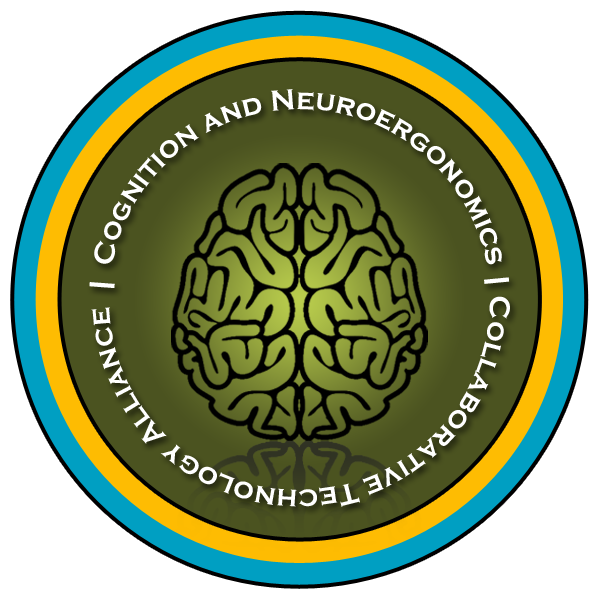Technology Transfer
The efforts outlined in the base period of the program as Planned Transition Efforts have continued to produce methods and tools that have transitioned and the progress made is the basis upon which we are accelerating research in specific areas and expanding the target transition space. The CaN CTA continues to make gains in overcoming a wide array of challenges to brain body imaging and modeling in natural environments that can be applied to facilitate technologies for real-world. Advances were made in technology enabling research and some efforts have resulted in tools transitioning to academic, government, and industry partners within and outside the CTA.
The CaN CTA also continues to expand the technology transfer and integration targets. We have engaged other US DoD agencies to support advances in human autonomy integration, and to support neuro-physiology, and performance investigations of future technologies. The CTA is also actively engaging potential transition customers in the consumer products domain. The CTA is discussing advanced applications of EEG with consumer electronics industry. Further, the CTA is discussing innovative applications for the automotive industry, and is also continuing dialog with an automotive giant for initiating a collaborative research project.
However, even as the CTA looks for near term opportunities to push into commercial products, basic research needs remain to further understand the variability within and between users in the unconstrained, unpredictable real-world contexts. Therefore, the CaN CTA will continue to explore unchartered territories in basic neuroscience research so that more informed system designs can emerge and more robust Brain Computer Interaction (BCI) technologies can be developed.
Beginning in Year Five the CaN CTA has started to investigate the robustness of principles and models deployed in current BCI technologies over long term use and attempt to characterize the within subject changes during extended use of BCI technologies. This study is planned to be run over 3 years and will provide insight that is lacking in current BCI technology prototypes and concepts in the market. Moreover, the CTA will apply findings of this investigation to guide additional research that will refine our understanding of stability of brain processes over long time periods and also point to more specific needs for compensating for within user changes and variability in future BCI technologies.
Further, the CTA will also hone its focus on understanding two major sources of cognitive performance degradation, stress and fatigue. The CTA will tackle examination of fatigue and stress during common modern day contexts such as driving, and attending college classes, while continuing to refine the methods for acquiring multi-aspect neuroimaging data in realistic or real-world environments. This effort will increase the resolution of characterization and understanding of effects of stress and fatigue and possibly induce additional research to examine stress and fatigue in other real-world contexts. Moreover, this research will enable the further maturation and broader transfer of technologies such as the closed loop driver fatigue management as demonstrated by CTA partners, NCTU and UCSD, or new ideas for integrating the driver with vehicle automation such as Adaptive Cruise Control.
In parallel with these activities, the CTA will continue to strengthen research into computational methods for exploring large multi-aspect data which will include the LSIE data. The methods being tested on LSIE data will also begin to be applied on the new large multi-aspect data to be collected for the efforts outlined above so that the technology enabling analyses of within subject and between subject variability in the real-world can be performed.


